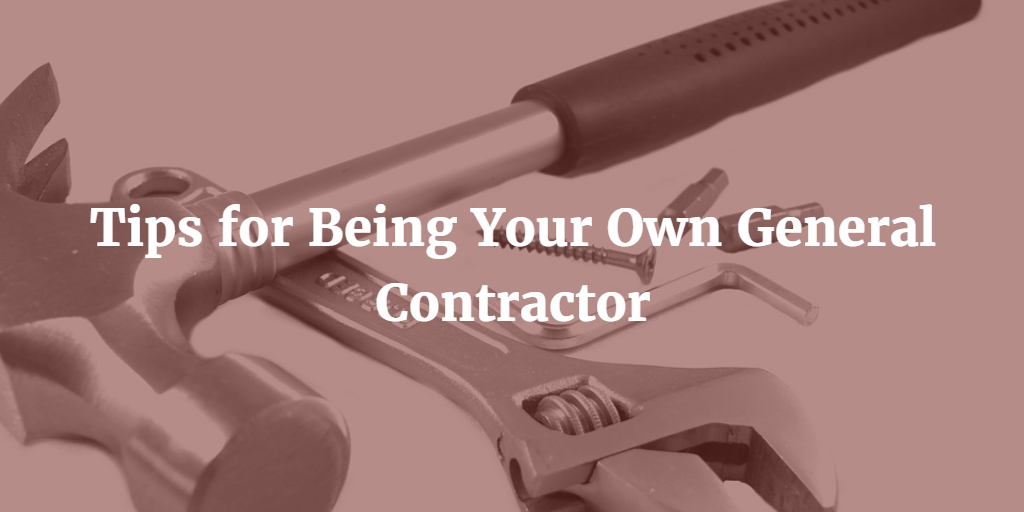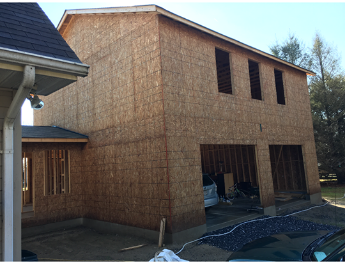
Subcontracting Your Own House – Acting as Your Own Contractor When Remodeling
We have recently been adding a large addition to our house. Because we are a family of horse lovers, we need a garage and mud room. Let’s face it; having horses is messy and…well, muddy! Therefore, we need this addition. However, getting a contractor means spending money on things we could do ourselves. Instead, we are acting as our own contractors. Here are some DIY tips on how to act as your own contractor when remodeling your house! (that’s my house in the image, in the middle of the construction phase)
#1 Make a Plan
It is important to make sure your plan is set before you begin your project. Not just a list of materials either, but a drawing of the space, with measurements, so you don’t have to try and guess as you go along. There are so many free resources to help you along the way like 84 Lumber for example. They’ll assist you with a design and complete materials list at no charge to you! If you prefer to do it along you can find some simple software that’ll help you create your new designs and material list (for those more computer savvy)
#2 Set a Budget
Setting a budget is a good way to make sure you can afford the addition you want. It is, also a great to use as a negotiation tool. If you know what you can spend financially without putting yourself into a predicament, it is easier to wheel and deal on products that you need at local stores. Set a budget and stick to it. For instance, you can pick out a bath tub for a bathroom remodel very inexpensively or you can find them in the thousands…. So, this is also a matter of setting priorities. Do you want a nice bath tub with a linoleum floor or a standard bath tub with a tile floor – you decide!
#3Take your Time
We are taking our time with our garage, mud room and screened porch. If we aren’t in a rush, it is easier to start with small projects and work our way up to the larger ones. Taking your time prevents you from splurging on materials and spending the extra money you didn’t want to spend. Take your time to look at reasonable prices, and buy your materials a little at a time. If you’re in a rush you’re more likely to make costly mistakes. When doing some of your own work and subcontracting out other parts you’ll be doing a considerable amount of online research and watching tutorial videos so plan in extra time.
#4 Do What Needs Done First
In our case, we need a mud room since we have horses. This is the first thing that needs to be done in our home. Decide what you need to be done first. If you need new flooring, do that first. If you need new windows before winter, do that first. Doing the necessities is key to keeping your home up to par and saving money along the way. So, start with a list of your priorities…..!
#5 Choose Quality Items
Choosing quality items will help to make sure that all your work lasts. Though it may seem less expensive up front to buy cheaper materials, spending money to redo that part of the house later on is not saving you any money in the long run. Lower price doesn’t always mean it’s the best choice. Choose materials that are going to last for years to come, not just a few months. Research ratings, don’t be afraid to call the company and speak with the representatives to have questions answered; How long will this exterior door last? Is the glass triple pane? Where will I hang blinds so a salesperson coming to my door can’t look right into my house? Will this lock wear out from the weather – if so how long?
#6 Decide where You Can Splurge and Where to Hold Back
Sometimes you want to splurge on certain aspects of your house. It is important to determine ahead of time where you want to splurge and where you need to hold back. Is there a certain décor you want? Do you have an ideal bathroom set up? Do you want your kitchen done in a way that makes sense to you? For me, I splurged on getting the best quality paint I could get. You know the washable paint…..? Having washable walls is worth it’s weight in gold when you have little ones in the house! With kids, in my book it’s a necessity to splurge on paint to keep the house in order!
#7Make Sure You Have All the Tools Needed
If you are going to be your own contractor, you want to make sure you are doing things right! This means not only taking your time but getting all the right tools needed for the project. Not having tools, you need such as saws to cut straight lines, mudding tools, or a ladder to reach high points can hold up your project, or cause you to do a half-way job. Know what kinds of tools you need, where to get them for the best prices, and how much of everything you need to get the project done. You can buy tools new or you may like to consider Craig’s list or local swap and sell sites.
#8 Ask for Contractor Discounts at Local Stores
Contractors get discounts at many stores including Lowes and Menards. However, they may require that you’r purchasing large quantities and higher margin items. You can, also, go to the store manager and say, “I need a lower price” or “I can only do .39 a square yard instead of .79 what can you do for me?” Rather than have you walk out without a purchase in hand, many stores will wheel and deal with you to get the right price for your materials. Ask for military, company, or school discounts, too. Every little but helps!
#9 Watch DIY videos on YouTube
If you are not sure how to hang drywall, start a mudroom, or even lay flooring, there are tons of DIY videos on YouTube that you can watch. You don’t have to be a professional to follow directions, and these videos give you step by step process of what the professionals do. You’ll even find professional DIY videos on the websites of many manufacturing sites. And, as mentioned previously, don’t forget that you can call the manufacturer of a product and ask questions.
So, be your own contractor and save money! Ladies, this is a place where you can help your husbands with research, calling manufacturer’s, price checking and so much more! Being your own subcontractor is a team effort!


Leave a Reply